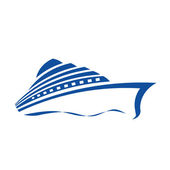The maritime industry, a complex and globally interconnected system, relies heavily on a skilled and knowledgeable workforce. From navigating vast oceans to managing intricate logistics, seafarers and maritime professionals require specialized education and training. This comparative study examines the diverse approaches to maritime education and training across different regions and institutions, highlighting best practices and identifying areas for improvement.
Maritime education and training encompasses a wide range of disciplines, including navigation, engineering, maritime law, and ship management. It takes place in various settings, from specialized maritime academies and universities to on-the-job training aboard ships. The structure and content of these programs vary significantly across different countries and institutions, reflecting diverse national priorities, cultural contexts, and industry needs.
One key area of comparison is the balance between theoretical knowledge and practical skills. Some programs emphasize classroom-based learning, while others prioritize hands-on experience through simulations, workshops, and shipboard internships. A well-rounded maritime education typically combines both, ensuring that graduates possess both the theoretical understanding and the practical skills necessary to perform their duties effectively.
Another important aspect is the level of specialization. Some programs offer broad-based maritime education, preparing graduates for a variety of roles within the industry. Others focus on specific areas, such as navigation, marine engineering, or naval architecture. The choice of specialization often depends on individual career aspirations and industry demands.
International standards play a crucial role in shaping maritime education and training. The International Maritime Organization (IMO) sets global standards for seafarer certification through the International Convention on Standards of Training, Certification and Watchkeeping for Seafarers (STCW). These standards ensure a baseline level of competency for seafarers worldwide, promoting safety and preventing maritime accidents.
Comparing maritime education and training programs across different regions reveals diverse approaches. Some countries have established strong maritime academies with long traditions of excellence. Others have adopted more flexible models, relying on partnerships between educational institutions and shipping companies to provide practical training. The availability of resources, the level of government support, and the strength of industry linkages all influence the quality and effectiveness of maritime education and training.
The rapid pace of technological change in the maritime industry presents a significant challenge for maritime education and training institutions. Keeping curricula up-to-date with the latest technologies and ensuring that graduates are equipped to work with advanced equipment is essential. This requires ongoing investment in training facilities, faculty development, and curriculum revision.
Looking ahead, several key trends are shaping the future of maritime education and training. The increasing use of simulation technology is allowing for more realistic and cost-effective training scenarios. Online learning platforms are expanding access to maritime education, particularly for those in remote areas. The growing emphasis on sustainability is leading to the integration of environmental awareness and responsible maritime practices into curricula.
Maritime education and training is a dynamic field that must adapt to the evolving needs of the industry. Comparing different approaches and identifying best practices is crucial for ensuring that seafarers and maritime professionals are equipped with the knowledge and skills necessary to navigate the challenges of the 21st century. International cooperation, continuous improvement, and a focus on innovation are essential for maintaining high standards of maritime education and training worldwide.
